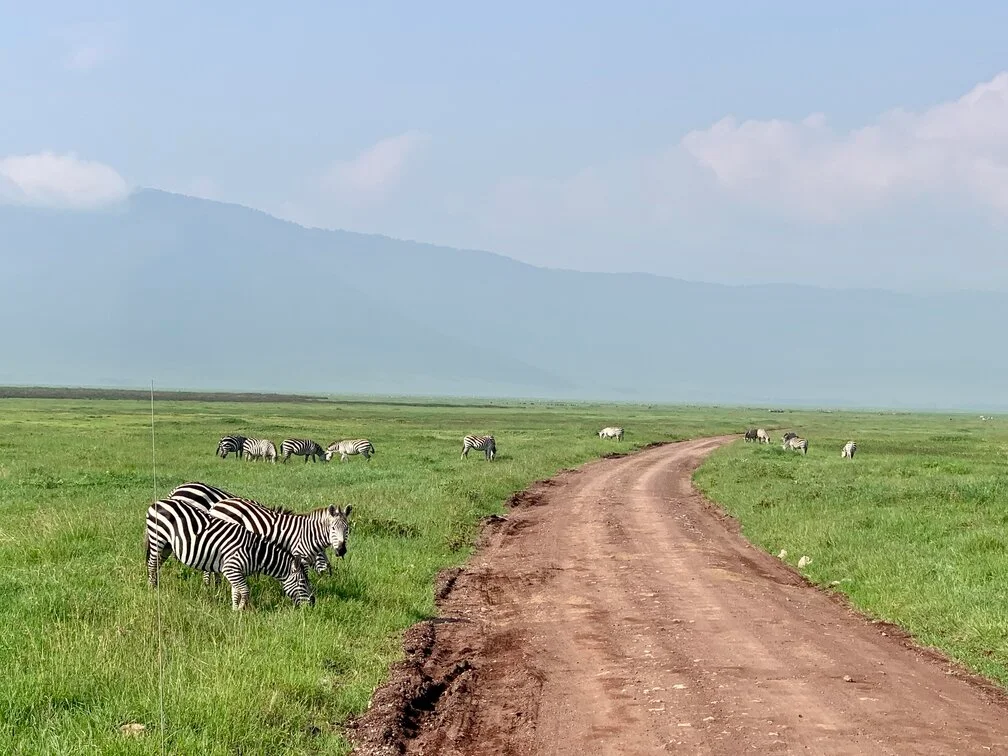The Ngorongoro Conservation Area is a vast expanse of highland plains, forests, and savannah woodlands spanning from the Serengeti National Park in the north to the eastern part of the Great Rift valley. The park was established in 1959.
The Ngorongoro crater is the largest continuous caldera in the world (about 14km) which is never flooded although it contains a small saline lake known as Lake Makat and the Gorigor swamp.
Table of Contents
The Ngorongoro Conservation Area has an elevation of 1,000m from the lowland of the eastern Serengeti.
In 1959, the Ngorongoro Conservation Area was established for multiple land use. Wildlife coexisted with the local Masai people who practised traditional livestock grazing.
The park is globally recognized for its biodiversity conservation and the presence of endangered species of wildlife such as the black Rhino.
The park is a part of the Serengeti ecological environment, which is one of the last undamaged ecosystems in the world today and is home to a large and amazing animal migration.

The Ngorongoro Conservation Area is managed by the Ngorongoro Conservation Area Authority (NCAA).
There is a general management plan with the primary objective of preserving the natural resources of the property, encouraging tourism and safeguarding the interest of the Masai people.
What Makes Ngorongoro Conservation Area Famous?
The Ngorongoro Conservation Area is famous for being one of the largest calderas in the world. The crater is one of the main attraction sites in the conservation area.
Other reasons why the conservation area is famous include:
A diverse range of wildlife: the park is home to different kinds of wildlife such as elephants, rhinos, lions, leopards and buffalos. There are about 25,000 wild animals including zebras, gazelle, hyenas and more.
Cultural value: the Masai people have lived here for hundreds of years and visiting the area gives tourists the opportunity to learn about their culture and way of life.
Finally, the unique blend between the diverse wildlife, the native Masai pastoralists whose existence is an important part of the conservation’s history and the presence of the world’s largest intact volcano offers tourists an amazing experience of wildlife, nature and culture.
Where is Ngorongoro Conservation located?
The Ngorongoro Conservation Area is located in northern Tanzania, precisely in the Ngorongoro district of the Arusha region. The area covers about 8,292 square and it includes the Ngorongoro crater.
Animals That Can Be Found in the Park
The Ngorongoro Conservation Area is home to a variety of wildlife and some endangered animal species. They include:
- Lions
- Leopards
- African elephant
- Cheetah
- African buffalo
- Spotted hyena
- Hippopotamus
- Masai giraffes
- Eland
- Gazelle
- Topi
- Impala
- Grant’s zebra
- Warthogs
- Bat-eared fox
- Black-backed jackal
- Flamingo
- African wild dog
How Much Does It Cost To Visit The Park?
The cost one would incur while visiting the park will vary largely depending on the length of stay and activities you will engage in.
Park fees: the fees is paid at the entrance gate and it varies with age. Adults 16 years and above are charged 50 US dollars, children 5-15 years are charged 10 US dollars while kids 0-4 years are free. This fee expires after 24 hours.
Accommodation: cost of accommodation varies inside the Ngorongoro Conservation Area.
Generally, accommodation would cost between 200-1000 US dollars per person per night. These rates depend on the season of visit and accommodation type.
Crater fees: a fee of 295 US dollars is charged per vehicle. Tanzanian citizens are charged 11,800 Tanzanian Shillings.
Walking safari guide fee: if you would like to take a long or short walk in the crater, the fee for a walking safari is 23.6 US dollars . Non-East African citizens are charged 11.8 US dollars.
Camping fees: tourists who would like to have an experience spending nights in the jungle which is one of a kind, would have to pay camp fees. Adults above 16 years old who are non-east African residents are charged 35.4 US dollars while children between 5 and 15 years are charged 11.8 US dollars.
Tanzanian and east African citizens are charged 11,800 Tanzanian Shillings for adults above 16 years, while children between 5-15 years are charged 5,900 Tanzanian Shillings.
How Far is The Park To The Capital?
The distance between Ngorongoro Conservation Area from Dar es Salaam by road is 857km which is an estimated 4hr 42minutes.
Requirements For Entering The Park
These are some of the requirements tourists to the Conservation Area must fulfill:
- Have a valid passport.
- Have a valid visa (which can be obtained before arrival or at the airport upon arrival).
- Proof of yellow fever vaccination.
- An experienced and licensed driver who is familiar with the terrain and rules of the conservation area.
- Respect the rules and regulations of the conservation area.
Security Measures Visitors Should Pay Attention To While Visiting The Park
1) Do not disturb the wildlife.
2) Do not stray to areas or roads that are off-limits.
3) Use licensed tour guides who will advise you on the safest places to visit and the safest routes to take.
4) Travel in groups. Avoid travelling alone so Incase of an emergency situation, you will have people to call for help.
5) Keep a safe distance from wildlife and do not try to touch them.
6) Ensure your properties are secured at all times. Use a safe box to store all valuable items and keep it locked.

